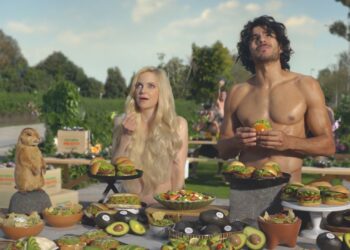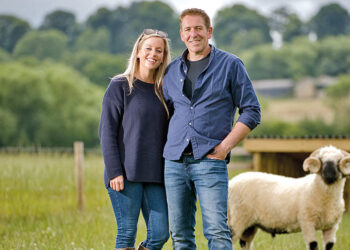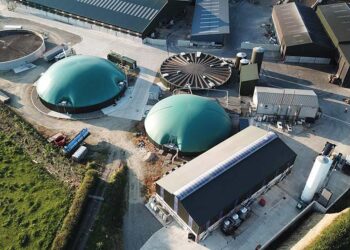Mercy for Animals president and CEO Leah Garcés has been an animal rights advocate fighting the factory farming system for more than two decades. But her approach to advocacy changed the day she met Craig Watts. Watts, a former contract poultry farmer, represented everything Garcés was against.
What she didn’t realize was that he was also against the factory farm system, having experienced first-hand the way it abuses farmers. What unfolded in the years after their first meeting was an initiative called The Transfarmation Project, which today works to help former contract farmers transition away from this system and into sustainable agriculture.
In her new book, Transfarmation: The Movement to Free Us from Factory Farming, Garcés takes a holistic approach to framing the issue of industrial animal agriculture. Not only does she detail animal rights abuses, she explores how factory farms create living and work conditions for humans that are unacceptable by any standard. Garcés takes the reader to North Carolina, Iowa, Texas, and beyond. She shows us what the conditions are like for animals and workers in slaughterhouses, and how living near hog farm sprayfields means you’ll inevitably have pig feces inside your home.
In this book, Garcés shows that a more sustainable food system will never result from a fragmented approach, but requires a holistic view on the well-being of communities across the country.
Transfarmation: The Movement to Free Us From Factory Farming is available for purchase now. This interview has been edited for length and clarity.
Modern Farmer: You begin this book by recounting your first meeting with Craig Watts, a former contract poultry farmer. Historically, animal activists and contract farmers have been on opposite sides of the factory farming issue. But instead of finding an enemy in Craig, you found an ally. Can you tell me about how this discovery changed your perspective on how to fight the industrial animal agriculture system?
Leah Garcés: Before I met Craig, I was a vegan animal rights activist had perceived contract farmers, poultry farmers, in one way: They’re the enemy—they’re to blame. And through a mutual journalist, I was able to make contact with him and [was] eventually invited onto his farm to see his chicken farming practice.
And I went in there with the idea that I was going to go in, get footage and get out. But when I got there, everything changed. We sat down and started talking, and he has twins that are the same age as my oldest son. It turned out he hated factory farming as much as I did. And this, I realized, was my biggest blind spot I’d ever had in all of my activism, ever. And as I listened to him, I realized I had overlooked a very important ally.
And then that made me realize, how many other allies have I overlooked? It absolutely transformed my strategy and activism. My job after that became about building bridges to other folks, other stakeholders, other groups. And I was most curious about the ones that I perceived as my enemy, and most curious about wanting to meet them and finding what common ground we could to build power—build power to bring down a very oppressive system that impacts so many in such a negative way.
MF: You started The Transfarmation Project to assist former contract farmers in transitioning out of industrial animal agriculture. Why were you moved to create pathways for farmers to get out of this line of work?
LG: I’ve been an activist working to end factory farming for about a quarter of a century now, and what I’ve noticed is we talk a lot about the problem and a lot about the solution, but not on how to get from problem to solution. We don’t look at the path in between. I really wanted to roll up our sleeves and try to create easy runways for farmers. And I don’t pretend that a small nonprofit could transition thousands of farmers, but what I wanted to create were models, demonstrations, prototypes to test if it was possible. And it is possible, and farmers do want to transition. So, now we know. Now we have the prototypes. It’s time to move forward with creating the plans for how farmers could off-ramp.
read more
They Once Worked in Factory Farming. Not Anymore.
MF: Large-scale animal agriculture CAFOs are disproportionately built in communities of color. One of your chapters focuses on eastern North Carolina, where there is an abundance of hog CAFOs in majority Black communities. You also write that the industry there has a lot of influence on policy and even local law enforcement. Residents have become environmental justice advocates, sounding the alarm on how CAFOs impact neighboring communities. What did you learn from your time in this community about how CAFOs impact their neighbors and how people can organize against them?
LG: What is happening in North Carolina is happening around the entire country. I did dive deep, though, into one particular community’s experience in North Carolina, and I had the opportunity to meet two women who in particular have been fighting the system, René and Rosemary.
Their families had established property ownership and economic freedom post-slavery, and this was huge for this population. It created freedom. It created mobility. And owning land was very significant in that sense. And it was only later that the pork industry started to move in around these communities. And in doing so, [it] not only negatively impacted their quality of life and their health, but [it] drove their property prices down.
[It] might not seem obvious why a farm moving next door would cause property prices to drop and health to decline, but here’s why: These giant pig farms create a giant amount of pig waste. The pig waste goes into what is euphemistically called a lagoon. The lagoons are cesspools of pig feces. Those get to be too full, and so the solution is to pump out the waste onto adjacent fields—and not fields that are necessarily growing crops, just fields to absorb the pig poop. They’re in giant sprinklers, and those sprinklers spray into the air. That spray inevitably flows through the air and onto the neighbor’s homes, their mailboxes, through their keyholes, windows, ends up on countertops, microwaves, ovens. There’s scientific evidence where that’s been shown, that there is pig feces inside of homes like Rosemary and René‘s.
And if you look at where this is happening, it is happening in Black communities around the country. If you were to spray pig feces on a field next to a white suburban home, it would be shut down right away. The reason it’s not shut down is because these communities have less political, social, and economic power.
People like René [and] Rosemary are fighting back. There’s still a lot of work to do, but they are not giving up. And it was very inspiring to meet these women who are fighting the pig industry, to protect their land, protect their economic mobility, and protect their power.
MF: You mention many important policy priorities in this book, such as the Farm System Reform Act, the Packers and Stockyards Act, and work to reduce line speed in slaughterhouses. What are the most immediate policy priorities that readers should contact their legislators about?
LG: I think one of the policies that could make a difference on so many levels is to slow down the slaughter lines. One of the [slaughterhouse] workers told me, her name was Sandra, that on a daily basis, 10,700 pigs would pass through her hands, and that the crux of the problem, the thing that makes it dangerous and difficult, is the line speeds. And so, slowing down how fast they go would not only create better, safer working conditions, but [it] will result in higher animal welfare and less suffering of those pigs.
Same with chickens. There are three chickens every second that pass in a slaughter line. It’s so fast. If we slow those lines down, the chances of reducing their suffering during slaughter increases. The potential for less suffering increases for both the animals and the people working those lines. I also think that, as mentioned in the book, the main animals that are moving through our food and farming system, chickens, are excluded from federal protections. There are no federal laws protecting chickens that are raised for meat. They are specifically excluded from the laws that require humane slaughter. It’s unacceptable. There’s a lot we can do right away, just [on] the slaughter side of things [that] would reduce suffering and increase safety.
Garcés and Watts stand in a former chicken barn. (Photography by Transfarmation / Mercy for Animals)
Beyond that, we need to provide the opportunity for farmers to shift away from factory farming. So many of them want to, but they are under the thumb of debt. The Farm System Reform Act laid out a plan for creating a transition for these farmers, if they wish to, and that involves debt relief for the farmers and transition money for them to move to better farming practices.
This is not the first time we’ve done something like this as a country. We did it with tobacco, and when farmers were given the choice, overnight, many of them just shifted away from tobacco. It’s part of our history to adapt and adjust our agriculture policy according to the pressures that our country is under and the new information we have about the dangers of agriculture practices. Just like tobacco, this is dangerous, and it’s putting us under pressure, and we need to adjust.
MF: Industrial animal agriculture creates a cheap product. But you write that that’s because the real costs of this system are externalized to everyone but the industry itself. How do we begin to hold the industry accountable for the harm it causes to both human and animal communities?
LG: I think it’s really important for consumers to understand that cheap meat is only cheap at the register, but it is costing someone a lot. It is costing the animals suffering. It is causing people suffering. It’s causing our environment destruction, and it’s costing communities their health. And those have real prices to them. So, communities are paying medical bills. Communities are paying for environmental clean-up costs, and slaughterhouse workers are paying medical bills, and the animals are suffering. And there’s no price that can be put on that.
But if you flip that and you say, if we take animals out of cages, that increases the cost by a percentage. That’s how we’re putting the cost back into the system, rather than the animal. If we slow down the line speeds, it means it will be a little less efficient, and it’ll cost a little bit more, but that’s where we’ve taken the cost out of the worker suffering and put it back into the meat, put it back into the system.
read more
An excerpt from Transfarmation: The Movement to Free Us From Factory Farming
MF: Last week, you got to open up the first Transfarmation demonstration hub. Can you tell me about what that experience was like and what you hope will come from it?
LG: Opening up the first Transfarmation hub was three years in the making. We had this idea that we needed to show and we actually needed to work out what a full transition would look like. We worked with consultants, we worked with architects, we worked with tech specialists, farm specialists, to help a farmer transition from growing chickens to growing microgreens in a greenhouse and mushrooms in a container. And last week, we had a launch party for that.
I was in these warehouses just after they had had chickens in them, and they smelled of ammonia. They had dust in them—the ghosts of the chickens were everywhere, and the smell of the chickens was still there. To enter this place of death and destruction and see it revitalized as growth and creation and innovation…It was so moving and gave me a lot of hope. It gave everyone a lot of hope that there are solutions. We just have to roll up our sleeves and work together towards them.
The post The Transition Away From Factory Farming appeared first on Modern Farmer.













